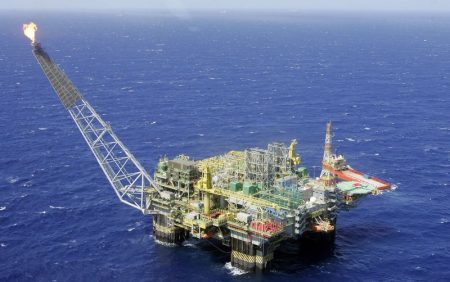Investing.com — Oil prices fell to a two-week low in Asian trade on Thursday, extending recent losses as markets fretted over an economic slowdown in China, while strength in the dollar also weighed amid continued signs of a hawkish Federal Reserve.
A bigger-than-expected draw in largely failed to pull oil prices from a three-day tailspin, as Energy Information Administration (EIA) data also showed that U.S. production came near pre-COVID highs in recent weeks.
This was accompanied by increasing fears of a Chinese demand slowdown, as weak economic indicators from the world’s largest oil importer continued to pile up. The country is also grappling with a brewing real estate crisis.
Hawkish signals from the minutes of the Fed’s July meeting pushed the close to two-month highs, further pressuring crude prices.
Weak from Japan also raised concerns over a global economic slowdown, as the country’s , particularly to China, shrank in July.
futures fell 0.2% to $83.13 a barrel, while futures fell 0.4% to $79.03 a barrel by 21:04 ET (01:04 GMT). Both contracts were at their weakest level in two weeks, and were now down for a fourth consecutive session.
Fed minutes present hawkish outlook for interest rates
The showed on Wednesday that nearly all members of the rate-setting committee supported higher interest rates to combat sticky inflation.
The bank had hiked rates to an over 20-year high during the meeting, and had still kept the door open for more hikes if inflation proved to be resilient. Data released last week showed that rose in July.
The prospect of more rate hikes, or even boosted the dollar, pressuring international oil markets. Investors also feared any further headwinds to demand from tighter monetary conditions for the remainder of the year.
U.S. inventories fall, but production nears pre-COVID highs
Data released on Wednesday showed that U.S. crude inventories saw a bigger-than-expected draw in the week to August 11.
The EIA projected that crude output in the world’s largest economy hit a new three-year high last week, at 12.7 million barrels per day. This came after a similarly strong reading for the week to August 4, putting production levels close to the record-high 13.1 million barrels produced before the COVID-19 outbreak in 2020.
The higher U.S. production figures somewhat undermined recent production cuts by Saudi Arabia and Russia, which were the drivers of an oil price rally over the past two months.
This, coupled with an increasingly bleak economic outlook for China, weighed heavily on oil prices in recent sessions. The world’s largest oil importer is now expected to roll out more stimulus measures to support growth, starting with a next week.
Read the full article here
















